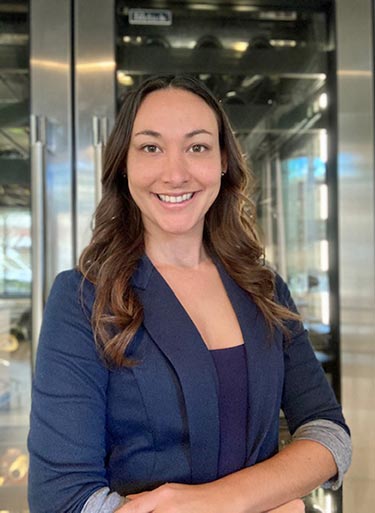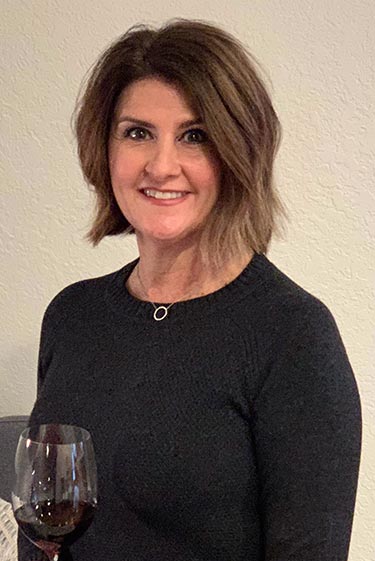Two sommeliers, Holly La-Porta Jones and Shelly Fitzgerald, share professional tips on how to improve your wine tasting sensory skills

Holly La Porta-Jones is a sommelier, wine educator and manager of the Woodinville tasting room for Rocky Pond Estate Winery
Brush After
I am still surprised at how many of our guests sit down to do a tasting and say, “Well, I just brushed my teeth so I probably can’t tell the difference.” It’s a healthy routine to brush regularly, but it does ruin your palate for a few hours, not to mention the wine will taste terrible. If you are going to be tasting wine but don’t want to skip out on hygiene, use an unflavored floss before, and brush after your last glass. Purple stained teeth are not only unappealing, they indicate you’ve had quite a bit of wine.
Focus Your Field
Pick a grape variety and dive into that bottle. Explore the varietal’s different expressions—in different soils and winemaking methods around the world. If you are unsure where to start, Chardonnay is a good warm-up for white wine. If you’re just starting out, select an oaked, un-oaked, and neutral oak bottle to train your palate on its presence. Once you have that down, try a Chardonnay from Washington, one from France, and one from Australia to consider how climate plays a role in each. When you are fine-tuning your expertise, pick a Chardonnay (of the same classification) from the Côte de Beaune, Mâconnais, and Chablis, all neighboring sub-appellations of France’s renown Burgundy region. Doing this with a small (but dedicated) crew will enhance your learning through interaction, and cut down expenses by sharing in the cost of the bottles.
Switch Up Your Order
If you do plan to do a large or extensive tasting in one seating, consider your lineup. One of my favorite wine minds would always serve reds first, then whites. The reasoning? Having a delicate Pinot Blanc then going into a Cabernet Franc will make the Franc appear to be overly tannic and alcoholic, and the Blanc too light and bland. Finishing a long tasting with whites keeps your palate sparked with their high acidity levels; whereas finishing with heavy reds can dull the palate and weigh down your taste buds with tannin. If you try this method, put sparkling wines toward the end as well, and dessert wines for the very last.
It’s Smart To Spit
When you are doing a tasting, large or small, keep a spittoon right next to you and use it. There’s no debate about it—your perception of taste will be compromised by the end, as will your focus and motivation to retain the knowledge you’ve just acquired. One major benefit of waiting until the end to actually drink the wine, is that you can enjoy your favorite, instead of trying to gulp down something you don’t really love.

Shelly Fitzgerald is a sommelier and wine education specialist at Columbia Winery
Practice Makes Perfect
As with anything, practice makes perfect. So, if you’re set on becoming a better wine taster then it’s important to practice a few simple things that in the long run will make a world of difference. Smell more, taste often, and don’t be shy with sharing aloud the aromas and flavors that you detect in a wine.
Smell Often
Our sense of smell is the sharpest of the five senses, but over time we come to rely on it less and less. And since it’s responsible for roughly 80% of our wine enjoyment, honing in on this important sense is well worth the investment. So, take a trip to the local farmer’s market and smell the seasonal fruits, vegetables and flowers. Do the same exercise at the grocery store and later with the dried versions, adding in spices as well, for the over-achievers. Soon you’ll begin detecting subtle differences between the fresh, less fresh, and dried examples of each.
Taste Frequently
Taste with as many palates—family, friends, colleagues—as possible. This is a sure-fire way to expand your sense of smell and lead you on the path to becoming a better taster. The places where we each grew up (whether it be suburbs, rural or urban, East Coast or West Coast, etc.) all play a significant role in the aromas we are naturally capable of detecting, with many of these intricate aromas stored as memories from our upbringing. Therefore, the wider the net of people you taste with, the broader scope of aromas, memories, and experiences you’ll be exposed to.
Don’t Be Shy
It’s not always easy, nor comfortable, to describe to others what you are smelling and tasting; but the more you do this exercise, the easier it will become. Putting descriptive words to the aromas and flavor characteristics you notice in wine can take loads of practice. However over time it will greatly enhance your wine vocabulary. Remember that what you detect in terms of aromas and flavor characteristics is partial to your own senses, but it may be a smell someone you taste with has struggled to identify—and by verbalizing it you will be helping them expand their wine vocabulary. As always, enjoy the journey and happy tasting!
